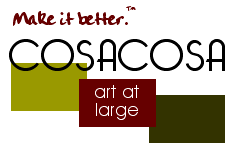



by Austin S. Kilaru, MD, David A. Asch, MD, MBA, Allison Sellers, BA, and Raina M. Merchant, MD, MSHP
Social media has been embraced as a tool for public health promotion. However, effective strategies for harnessing the capabilities of social media remain unclear. For example, many state and local health departments have adopted Facebook and Twitter accounts, yet public engagement with these account varies.
Several Web-based interventions for smoking cessation have been developed, but few tobacco prevention Web sites allow users to share links via social media. While YouTube videos with health messages have amassed millions of views, such as a popular video targeting soft drink consumption, their long-term impact is difficult to evaluate. In general, innovative approaches to disseminating health information must be developed to match the behavior and expectations of the public.
The potential for Web-based public health campaigns is tremendous. Nearly three quarters of Internet users conduct health-related searches each year. One third of US adults access health information through social media. Web sites can be practical and cost-effective platforms for spreading public health information, but traditional Web sites, often static and non-interactive, face challenges. With thousands upon thousands of health-related Web pages, the sheer volume of online content dilutes attention to any single health message. This message may also be lost in the noise of misinformation available online. By enabling the person-to-person spread of information within networks of users, social media has the potential to empower public health information to penetrate the clutter and reach a wide audience.
Social networks, however, can only spread health messages if users actively share content. The inherently serious and private nature of public health information may prevent its circulation. No formula exists for launching a viral health message, although a celebrity endorsement, compelling narrative, or entertaining video may help. Traditional promotional strategies, such as word-of-mouth, mass media, and physician referral, may still remain more effective ways to encourage adults to access online health information.
Many strategies exist for creating public health initiatives suited for social media, but two principles are critical. The first is to create stimulating content that compels users to share it with their online networks. The second is to optimize interactivity through contests, games, message boards, and user-generated content. These two principles were catalysts for the Defibrillator Design Challenge, an online contest and public art initiative to draw attention to automated external defibrillators (AEDs).
Each year, more than 300 000 Americans suffer a cardiac arrest outside the hospital. AEDs have been shown to dramatically improve survival following cardiac arrest. The devices are cost-effective, can be used by untrained laypersons, and have proliferated in public locations such as airports, offices, and schools. Despite their lifesaving potential, the devices often go unnoticed and unused.
The Defibrillator Design Challenge aims to install attention-grabbing images around AEDs in public locations. However, the project first employed the Web and social media in an attempt to spread awareness beyond the art exhibition. An open online contest generated designs for the art installations by allowing the public to submit and vote for designs. Designers could win several cash prizes and ultimately see their artwork converted into an art installation. Importantly, the contest featured incentives to share designs via social media.
The contest approach, a form of crowdsourcing, had two objectives. First, an online contest might allow messages to spread more broadly and rapidly than traditional marketing platforms. The contest enabled the health message to propagate through online social networks and extend its reach. Second, by submitting designs or voting, the participants became active creators of the message rather than passive recipients. The contest attempted to facilitate community engagement to strengthen the endurance of the contest’s ultimate message.
The project faced a challenge in determining the content of the designs and evaluating their impact. The AED artwork had to balance aesthetics with the task of communicating a health message. The designs might have assumed any form along the spectrum of abstract colors to literal “how-to” illustration. Therefore, it was difficult to predict which images would best educate and appeal to the public. The contest approach provided a potential answer to this problem. Through crowdsourcing the task of generating and voting on the artwork, the public selected which art was most meaningful, striking, or beautiful. Experts ensured that the artwork was accurate and appropriate, but the crowd knew best which resonated the most.
The Defibrillator Design Challenge provides a new model for Web-based strategies that promote a public health goal. An interactive online contest sought to engage social media users while crowdsourcing a creative task to promote AEDs. Social media and Web-based technologies have introduced powerful tools to reach vast audiences with important public health messages. Promoting public health through social media, however, is not without challenges. No single approach can convert public health messages into viral sensations. Ultimately, the best strategy may be to experiment with each new innovation in the continually evolving virtual world.
Austin S. Kilaru and Allison Sellers are with the Department of Emergency Medicine, Perelman School of Medicine, University of Pennsylvania, Philadelphia. David A. Asch and Raina M. Merchant are with the Penn Medicine Social Media and Health Innovation Lab, Penn Medicine Center for Health Care Innovation, University of Pennsylvania. This article was first published in the American Journal of Public Health, Volume 104, Issue 9, September 2014.